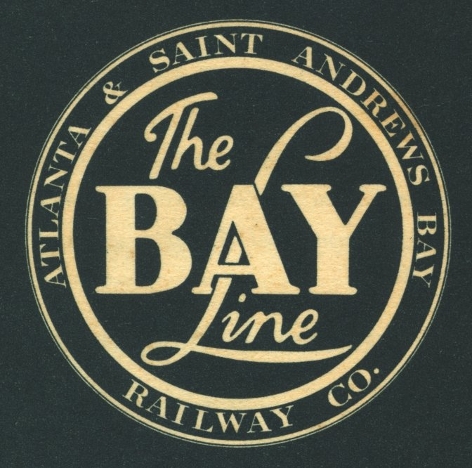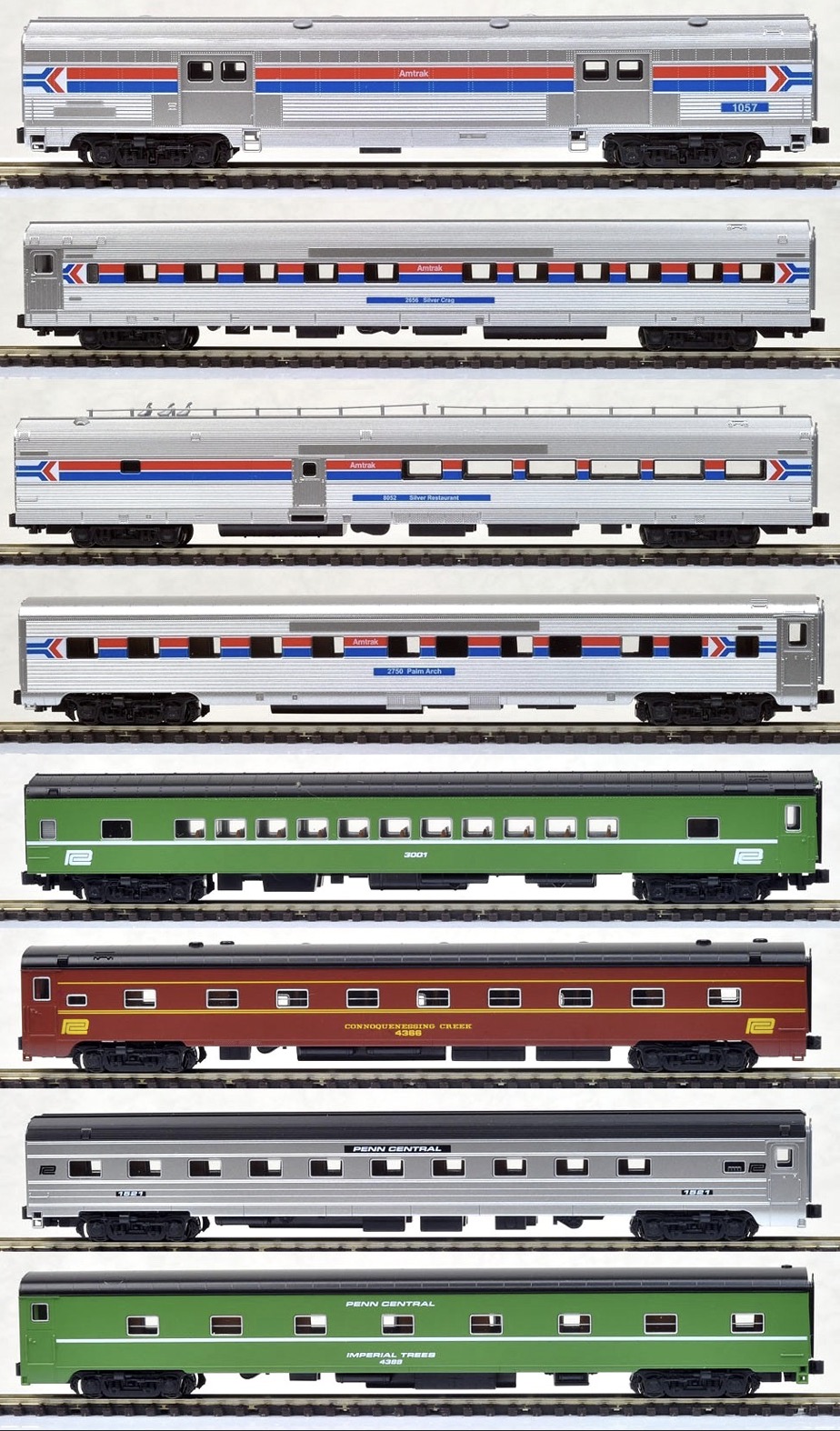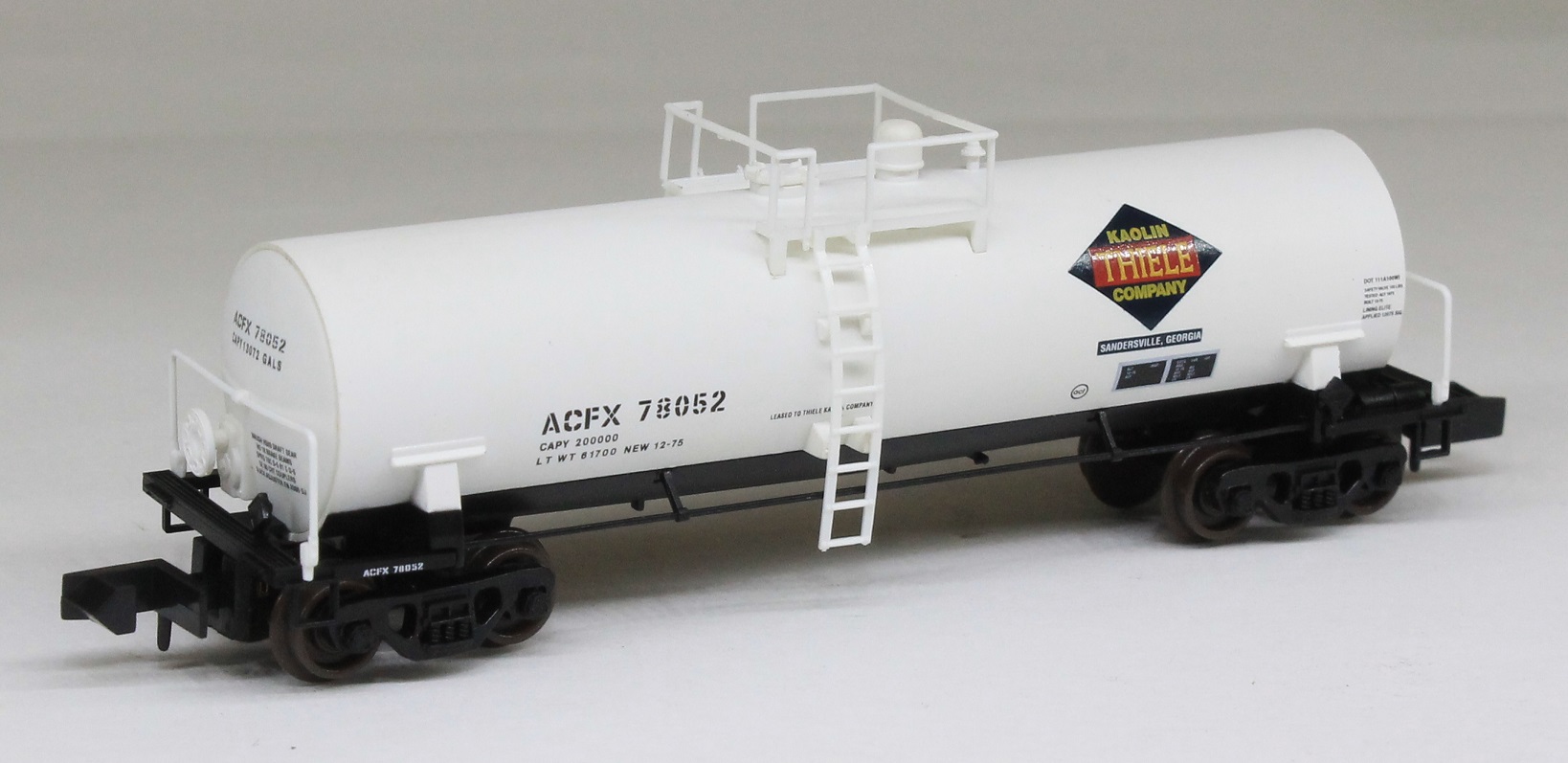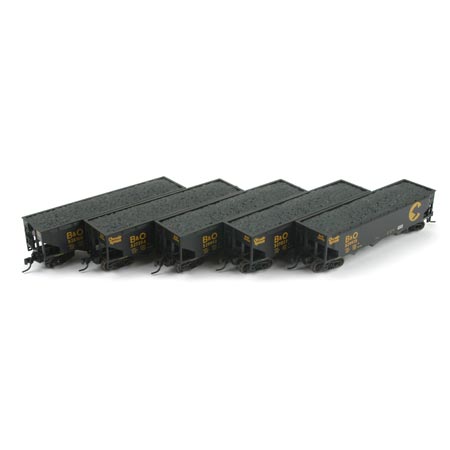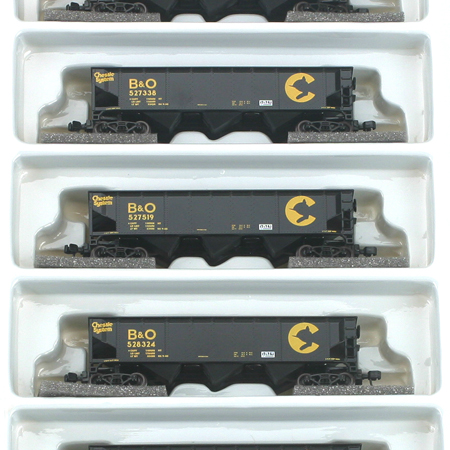Model Information: This is a model of a PS-1 boxcar with no roofwalk. Micro-Trains introduced this version of their popular steel boxcar in 1976. It features the same operating doors as the popular 20000 series boxcar with similar dimensions and details but this model is appropriate for hobbyists who model the post-roofwalk era.
Prototype History: The 40' Boxcar is widely known as one of the most popular freight cars used by railroads as they transitioned from steam to diesel. In particular the Pullman Standard or PS-1 design was one of the most popular and was widely used by North American railroads. These boxcars were built beginning in 1947 and share the same basic design, with certain elements such as door size, door style or roof type varying among the different railroads and production years. When production of these cars ceased in 1963, over 100,000 had been produced.
So just what is a PS-1? Well the simple answer is it is any boxcar built by Pullman Standard from 1947 on. The design changed over the years – sometimes subtly, sometimes for customer request, and sometimes in a larger way. In general, most PS-1’s built from 1947 to 1961 share the same dimensions and basic construction techniques. These cars all had a length of 40′, a height of 10’5″ or 10’6″, welded sides and ends and roof of Pullman’s own design. The greatest variation was in the size and style of doors used. Pullman Standard also offered 50′ and later 60′ boxcars – also with the PS-1 designation.
So just what is a PS-1? Well the simple answer is it is any boxcar built by Pullman Standard from 1947 on. The design changed over the years – sometimes subtly, sometimes for customer request, and sometimes in a larger way. In general, most PS-1’s built from 1947 to 1961 share the same dimensions and basic construction techniques. These cars all had a length of 40′, a height of 10’5″ or 10’6″, welded sides and ends and roof of Pullman’s own design. The greatest variation was in the size and style of doors used. Pullman Standard also offered 50′ and later 60′ boxcars – also with the PS-1 designation.
Road Name History: The Atlanta & St. Andrews Bay was completed in 1908 between Panama City, Florida (on the Bay) and Dothan, Alabama 89 miles to the north. At first, they made their way hauling forest products but saw a place for themselves in making Panama City into a major port. United Fruit Company agreed, bought the railroad and made plans to make Panama City their primary port for bananas. A&StAB picked up "The Bay Line" nickname during this period. In 1931, United Fruit gave up on these plans and sold the A&StAB to International Paper. In 1994, they officially changed their name to “Bay Line Railroad" and their reporting marks changed from ASAB to BAYL. In 2005, the Bay Line was sold to the Genesee & Wyoming shortline group. In recent years, the BAYL has been extended on the Dothan end east to Hilton, Georgia (where they connect with G&W sister roads Hilton & Albany and Chattahoochee Industrial Railroad) and north to Grimes and Abbeville, Alabama. This was the original Abbeville Southern Railway but it had been part of Atlantic Coast Line for decades. The segment between Dothan and Grimes is over CSX trackage rights.
The Atlanta and St. Andrews Bay Railroad (reporting mark ASAB), also known as the Bay Line, was a Class I railroad which operated in Alabama and Florida. The company was founded in 1906 and opened its mainline between Dothan, Alabama and Panama City, Florida in 1908. Later reclassified as a short-line railroad, its assets were acquired by the Bay Line Railroad in 1994.
As with many railroads in the region, the A&SAB began in the minds of timber investors and land developers seeking to access the agricultural resources of the Florida Panhandle and South Alabama. Chief among them was A. B. Steele, who created the railroad to build south out of Dothan towards the Gulf Coast. The company incorporated on February 14, 1906 and opened its 82-mile (132 km) line between Dothan and Panama City on July 15, 1908. Panama City was incorporated the following year at the terminus of the line. Plans were soon made to extend the railroad north to Atlanta, however financial difficulties and pressure from the Central of Georgia railroad put an end to any plans for extension. Read more on Wikipedia.
The Atlanta and St. Andrews Bay Railroad (reporting mark ASAB), also known as the Bay Line, was a Class I railroad which operated in Alabama and Florida. The company was founded in 1906 and opened its mainline between Dothan, Alabama and Panama City, Florida in 1908. Later reclassified as a short-line railroad, its assets were acquired by the Bay Line Railroad in 1994.
As with many railroads in the region, the A&SAB began in the minds of timber investors and land developers seeking to access the agricultural resources of the Florida Panhandle and South Alabama. Chief among them was A. B. Steele, who created the railroad to build south out of Dothan towards the Gulf Coast. The company incorporated on February 14, 1906 and opened its 82-mile (132 km) line between Dothan and Panama City on July 15, 1908. Panama City was incorporated the following year at the terminus of the line. Plans were soon made to extend the railroad north to Atlanta, however financial difficulties and pressure from the Central of Georgia railroad put an end to any plans for extension. Read more on Wikipedia.
Brand/Importer Information: Micro-Trains is the brand name used by both Kadee Quality Products and Micro-Trains Line. For a history of the relationship between the brand and the two companies, please consult our Micro-Trains Collector's Guide.
Manufacturer Information:  Kadee Quality Products originally got involved in N-Scale by producing a scaled-down version of their successful HO Magne-Matic knuckle coupler system. This coupler was superior to the ubiquitous 'Rapido' style coupler due to two primary factors: superior realistic appearance and the ability to automatically uncouple when stopped over a magnet embedded in a section of track. The success of these couplers in N-Scale quickly translated to the production of trucks, wheels and in 1972 a release of ready-to-run box cars.
Kadee Quality Products originally got involved in N-Scale by producing a scaled-down version of their successful HO Magne-Matic knuckle coupler system. This coupler was superior to the ubiquitous 'Rapido' style coupler due to two primary factors: superior realistic appearance and the ability to automatically uncouple when stopped over a magnet embedded in a section of track. The success of these couplers in N-Scale quickly translated to the production of trucks, wheels and in 1972 a release of ready-to-run box cars.
In October 1990 Kadee separated in two companies, with the newly created Micro-Trains® Line Co. continuing the Z, Nn3, and N Scale product ranges, with Kadee retaining the HO range.

In October 1990 Kadee separated in two companies, with the newly created Micro-Trains® Line Co. continuing the Z, Nn3, and N Scale product ranges, with Kadee retaining the HO range.
Item created by: nscalemodeler160 on 2016-04-07 10:48:37. Last edited by CNW400 on 2020-09-15 10:53:45
If you see errors or missing data in this entry, please feel free to log in and edit it. Anyone with a Gmail account can log in instantly.
If you see errors or missing data in this entry, please feel free to log in and edit it. Anyone with a Gmail account can log in instantly.



